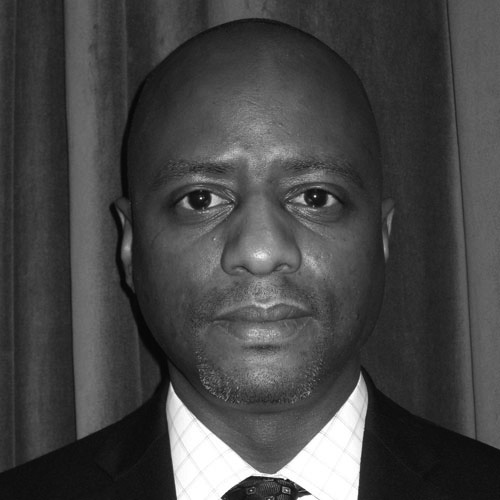One of the biggest challenges in the supply chain and procurement field is recruiting and retaining world-class talent, according to Linda Behan. The senior vice president of global procurement for Iron Mountain, a worldwide leader in information management solutions, explains how she tackles that challenge. To talk shop, Behan is joined by colleagues Bob Stepansky, Chris Misiorski, and Julie Barrera, as well as strategic partners Geoff Peters and Dawn Tiura.
After joining Iron Mountain in 2012, you created a supply chain department. Why?
Linda Behan: Iron Mountain grew rapidly through acquisitions in 2011. Our mature markets were experiencing significant margin pressure. With $1 billion in external spending, our senior leadership rightfully believed there was an expense opportunity. I was hired to create a world-class global procurement function, reduce costs, and mitigate both business and financial risk.
Why is recruiting and retaining talent such a challenge in your field?
Behan: High-caliber procurement resources are in demand, and have been for some time. Demand for these resources runs counter to the economic climate. When companies can no longer rely solely on revenue growth, they start looking at expenses, and the best way to do that is through sourcing talent and investing in procurement functions. We’re all pulling from a common pool, and the economics of supply and demand apply.
Chris Misiorski, vice president of global strategic sourcing, Iron Mountain: Companies are becoming creative in the war to secure great talent. As the vice president of global procurement at Iron Mountain, I’m faced with my staff being constantly bombarded with unsolicited job opportunities.
Are new hires difficult to find?
Behan: There are young candidates emerging with supply chain degrees. However, it’s not just about finding resources that understand strategic sourcing and procurement. Successful team members not only maintain these capabilities, but they master the art of collaboration and are uniquely capable of partnering with their internal and external constituents to deliver value. These resources are much harder to find and attract.
Dawn Tiura, president and chief executive officer, Sourcing Interests Group: While the industry has matured and dozens of well-recognized universities offer supply chain undergraduate and master’s degrees, it’s going to take years before enough graduates saturate the workforce and replace the non-strategic managers and directors.
How do you recruit and retain talent?
Geoff Peters, principal, The Hackett Group: Iron Mountain is developing a curriculum to support the onboarding, retention, and development of its procurement staff by focusing on the business and functional skills, leadership capabilities, process knowledge, and market intelligence required to support its internal stakeholders’ anticipated buying requirements.
Behan: Strategic resources are attracted to transformational opportunities. People like making a difference and will look at everything from the organizational culture to leadership, peers, and more to see if they can be successful. At Iron Mountain, we have a positive collaborative culture that values creative thinking, autonomy, and work-life balance. As a single parent, I understand and respect the balancing act, and want everyone in my organization to have a whole life. I believe it is my responsibility to define our strategy and to help each person execute to that charter.
Bob Stepansky, director of asset management, Iron Mountain: We don’t rush to fill a position even if the vacancy hurts the group in the short term. It’s more important to wait until the right person with the right skills and attitude is identified. Rushing to hire a mediocre candidate never works in the long run.
Tiura: HR has to support a higher pay structure for supply chain professionals. The starting wage out of college for an undergrad with a supply chain degree is $85,000 at a company that recognizes the strategic benefit of sourcing/procurement. But even if your pay structure is up to par, if you can’t or won’t transition to being strategic, you will lose good talent. Get HR on board with pay structures, put new hires in strategic roles, learn to manage the millennial generation, give lots of feedback, and offer intangible and tangible rewards related to their results, not the departments.
Misiorski: It’s important to create a workplace that’s more interesting than the opportunities presented by a recruiter. Somebody else will always offer my associate more compensation via base salary, bonus, company stock, or a better benefits package. My retention strategy is to provide a competitive compensation package to go with a fantastic workplace.
What qualities are you looking for?
Stepansky: We’ve selectively hired great candidates who don’t have deep sourcing or procurement experience. If they are smart, excellent communicators, aggressive learners, and enthusiastic about the opportunity, they’re worth the investment in role-related skills. But you can’t do this all the time.
What made the department successful?
Stepansky: Ms. Behan set the strategic vision for global procurement, hired the right people, and gave them the autonomy and support they needed to get the job done.
Behan: I’ve led several of such organizational transformations, starting with State Street Bank, followed by Credit Suisse, Fidelity Investments, and Nuance Communications. At Iron Mountain, I walked into an organizational construct with a lot of empty boxes. You don’t typically have that luxury.
How did you fill those boxes?
Behan: I reached out to the best resources whom I was fortunate enough to work with throughout my career. They all came onboard, and I trusted their instincts in their next hires. Create an environment where strategic resources can be successful, and value them as a whole person with a whole life, and believe me, you will have a world-class organization that not only thrives, but stays.
Julie Barrera, human resources business partner, Iron Mountain: Every candidate stated the same thing when asked why he or she would want to work here—because of Ms. Behan.
What was the result of Iron Mountain’s well-staffed supply chain department?
Behan: Over three years, the direct and indirect headcount grew from twenty-eight to fifty full-time employees. Investment in information and enabling technology increased threefold in market intelligence, analytics and reporting, and RFX/auctioning/supplier performance management tools. The procurement budget was also reduced by 25 percent and the summary savings achievements were seven times the ROI. The team is an integral business partner that supports the achievement of our internal client’s business objectives. Their success is our success.

